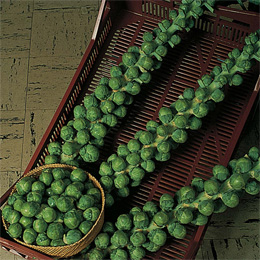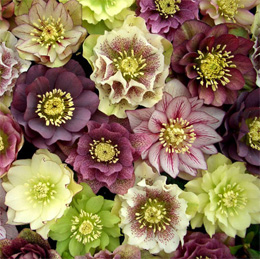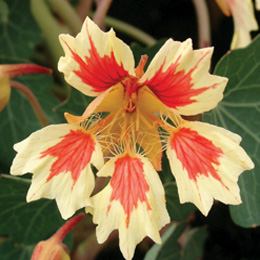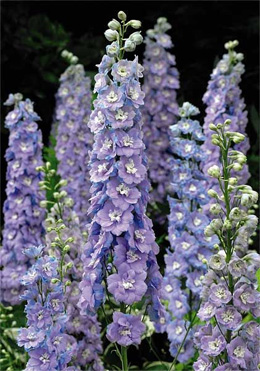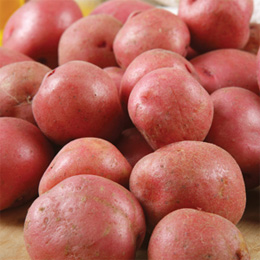History
More than 150 Years of Accumulated Horticultural Knowledge and Experience
The UK has a rich horticultural history and there are many well known personalities who have given their names to plants, garden styles and modern day horticultural companies. Among the companies that have founded the country’s seed industry a few names still survive, although their independence has been surrendered. Yet, as one of the oldest firms in the business, Thompson & Morgan retains both its identity and its reputation for innovation and quality.
It all began in a small garden behind a baker’s shop in Tavern Street, Ipswich, tended by William Thompson, the baker’s son. He started work by helping his father but, stricken with ill-health, he began studying botany and passionately cultivated the garden at the back of the shop in Ipswich, Suffolk, England. He was soon to acquire the name of the ‘baker botanist‘. From the back garden he moved to a nursery at the edge of Ipswich and then to an even larger one. Eventually there were three Thompson nurseries in the town and William began to publish a magazine called ‘The English Flower Garden‘.
In 1855 his first catalogue was produced and this was to be the forerunner of an unbroken line stretching through to today. William Thompson specialised in growing rare and unusual plants, seeds of which were sent to him from many overseas countries. It brought him a spirit of adventure, earned his business a reputation for exciting introductions and gave him the friendship of such great scientists as Sir Joseph Hooker, Sir Michael Foster and Charles Darwin. As one of the most distinguished plantsmen of his day his skill in raising plants of the Western United States was recognised when, in 1876 a volume of Curtis’s Botanical Magazine was dedicated to him. This was a rare honour. Twenty years later the Royal Horticultural Society invested him with its highest honour, the Victorian Medal of Honour.
The seed raising firm expanded and William Thompson entered into a fortuitous partnership with John Morgan. Although Morgan was by no means a botanist he was a shrewd businessman with sound financial knowledge and he was able to offer capital resources that enabled the expansion of the enterprise to be soundly financed.
William Thompson died in 1903 at the age of 80 but he had lived to see Thompson & Morgan become one of the country’s greatest seed firms with a reputation forintroducing more species and varieties to the British gardening public than any other seed company – a tradition that continues to this day. William’s death left John Morgan the sole owner of the business until, ten years later in 1913, Joseph Sangster became a partner.
A brilliant horticulturist and talented administrator, having previously been the manager of Lissadell Gardens in Ireland, Joseph was to add 4,000 plant names to the established 2,000 already in the Thompson & Morgan catalogue. He took over the company completely when, in 1921, John Morgan died. After ten more years, a site on London Road in Ipswich was purchased and two years after that Joseph was joined in the company by his son Murray. Murray had already received horticultural training in Edinburgh as well as having work experience at Slococks, the then well-known nursery of Woking, Surrey. The reputation of the company had grown to such an extent that whenever someone somewhere in the world wanted the seed of a particular plant, more often that not it was Thompson & Morgan who were able to supply it.
In 1939 Thompson & Morgan became a limited company and when Joseph died in 1952, Murray Sangster took control. He was later joined by his two sons, Keith and Bruce, both of whom had received horticultural training. In 1973 they decided to expand their distribution centre to Poplar Lane, Ipswich from where the company still operates. One year later, in 1974, Murray retired and Keith and Bruce Sangster took over the management of what was to become one of the most progressive horticultural companies in the world. On Murray’s death in 1994, Keith and Bruce became sole owners of the company.
In 1982 Bruce headed the company’s expansion in the USA after previously having a distribution base in Jackson, New Jersey. In 1999, the company became part of International Garden Products Inc., of Boston, MA, USA. In May 2002 Thompson & Morgan returned to independent private ownership.
In the late 1990′s Paul Hansord, the current Managing Director, developed an innovative range of Young Plants which were to be delivered throughout the UK. This side of the business has gone from strength to strength, leading the way in mailorder plants.
Imaginative marketing techniques have made Thompson & Morgan the industry’s pace-setters and have helped keep the company dynamic and young at heart. The quality of the product is the cornerstone of the company’s success, and quality control dominates every aspect of Thompson & Morgan’s operations. All suppliers have to stipulate seed germination rates, regular checks are made by Thompson &Morgan’s management of all contracted growers’ crops and every consignment of seed is rigorously tested in the laboratory and trial grounds by the company’s technicians. Finally, the seed is foil packed to retain pristine freshness before being inserted into the well-known and distinctive Thompson & Morgan packets. With every packet comes the company’s guarantee as to its viability.
To assist the amateur gardener Thompson & Morgan have tried to take the mystery out of gardening practices and engender the maximum enjoyment from growing seed. With this in mind the company published a 32-page booklet ‘The Germination Times’. The publication has received much praise from both beginners and experts as a definitive addition to the subject, and a further example of the way that Thompson & Morgan’s innovative approach to marketing is founded on long, practical experience. There are now also extensive growing guides and tips available online.
|



